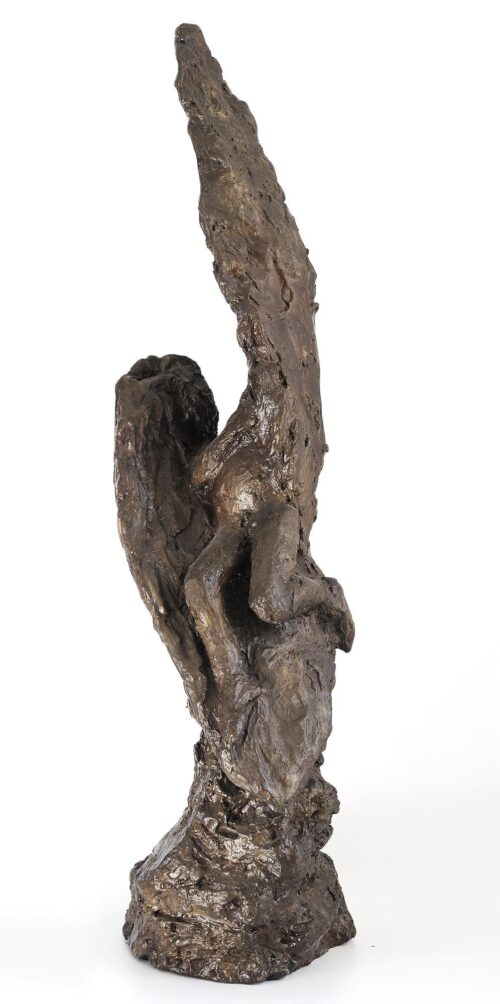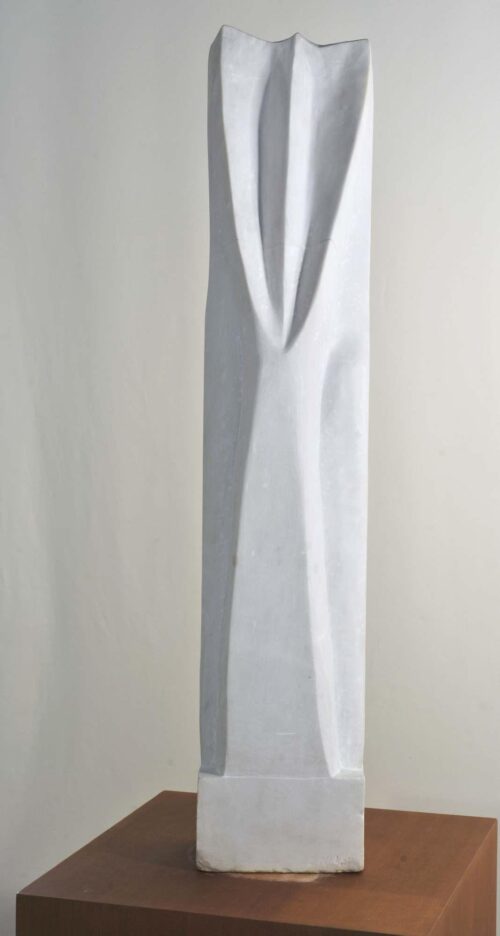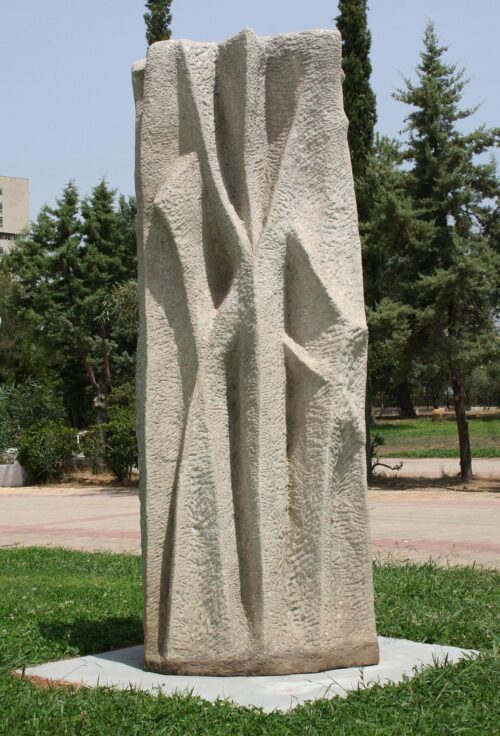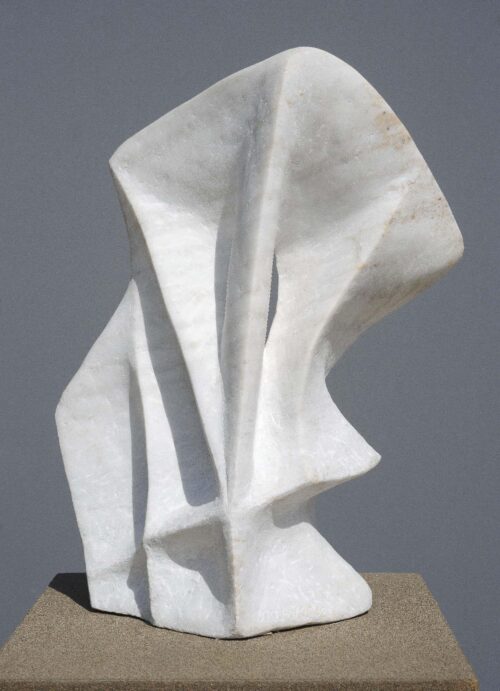
Sklavos Yerassimos (1927 - 1967)
Ikarus, before 1957
He studied sculpture at the Athens School of Fine Arts (1950-1956) with professor Michalis Tombros and continued in Paris, at the Ecole des Beaux Arts, with sculptors Henri-Geprges Adam, Marcel Gimond and Hubert Yencesse, and at the Academie de la Grande Chaumiere with Ossip Zadkine (1957-1960). He associated with Christian and Yvonne Zervos as well as the collector Baroness Alix de Rothschild, who in 1962 granted him a workshop at Levallois-Perret.
His first solo exhibition took place in 1961 at Yvonne Zervos’s gallery “Cahiers d’Art,” followed by many solo shows during his lifetime and posthumously. He also participated in major group exhibitions, including Panhellenic exhibitions, Paris Salons, the Antwerp Biennale of Sculpture (1961) and the Sao Paulo Biennale of the same year, the Paris Biennale Internationale des Jeunes Artistes in 1961 and 1963, in which he won first place in sculpture as well as receiving the young artists award, “Seven Trends in Contemporary Sculpture” (Sept Tendances de la Sculpture Contemporaine) in the gallery “Cahiers d’Art”, Paris (1963) and the international modern sculpture exhibition “Exposition Internationale de Sculpture Contemporaine” at the Rodin Museum (1966). His work has also been posthumously presented in major group exhibitions.
After a short period in the service of a figurative approach, during which he was interested in psychological profiling as well as an abstract treatment of the human figure, in 1959 Yerassimos Sklavos adopted abstraction. Mainly working on hard materials – granite, quartzite, marble, porphyry – and less often in iron or wood, which he carved directly – he created works in the round, in the context mainly of geometric and in certain cases organic abstraction. In 1960, he invented “Telesculpture”, a patented technique that enabled him to carve his materials more easily, using an oxyacetylene flame. The light plays a fundamental role in the effectiveness of his work, as it reveals recesses and apertures, and highlights the volumes, surfaces, the nature and colour of his material. Besides sculpture, he also became involved with drawing and painting, creating works which echo the style of his sculpture and range from figuration to abstraction.

Ikarus, before 1957

The Last Vision, 1967

La Passante, 1965

Icarus, before 1957

Lightning, 1965

We use cookies to make our site work properly, to personalize content and ads, to provide social media features and to analyze our traffic. We also share information about how you use our site with our social media, advertising and analytics partners. Read the Cookies Policy.
These cookies are necessary for the website to function and cannot be switched off in our systems. They are usually only set in response to actions made by you which amount to a request for services, such as setting your privacy preferences, logging in or filling in forms. You can set your browser to block or alert you about these cookies, but some parts of the site will not then work. These cookies do not store any personally identifiable information.
If you disable this cookie, we will not be able to save your preferences. This means that every time you visit this website you will need to enable or disable cookies again.
These cookies tell us about how you use the site and they help us to make it better. For example these cookies count the number of visitors to our website and see how visitors move around when they are using it. This helps us to improve the way our site works, for example, by ensuring that users find what they are looking for easily. Our website uses Google Analytics for statistics reporting.
Please enable Strictly Necessary Cookies first so that we can save your preferences!